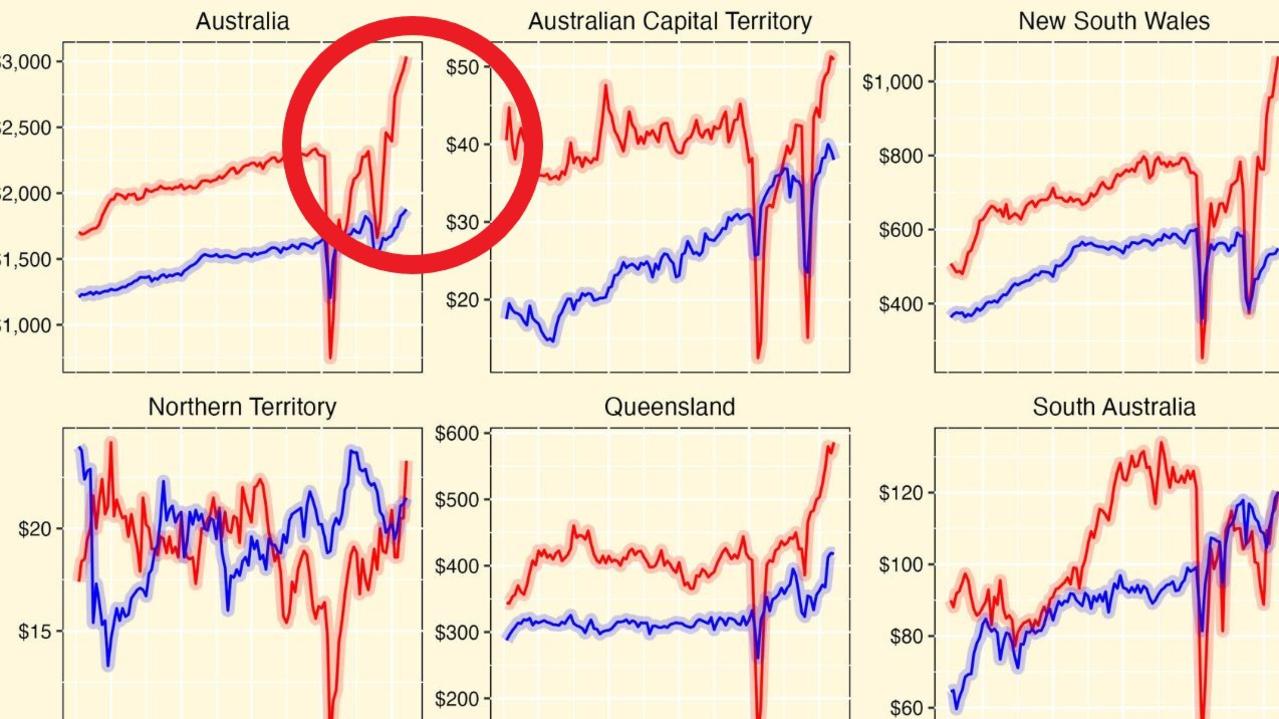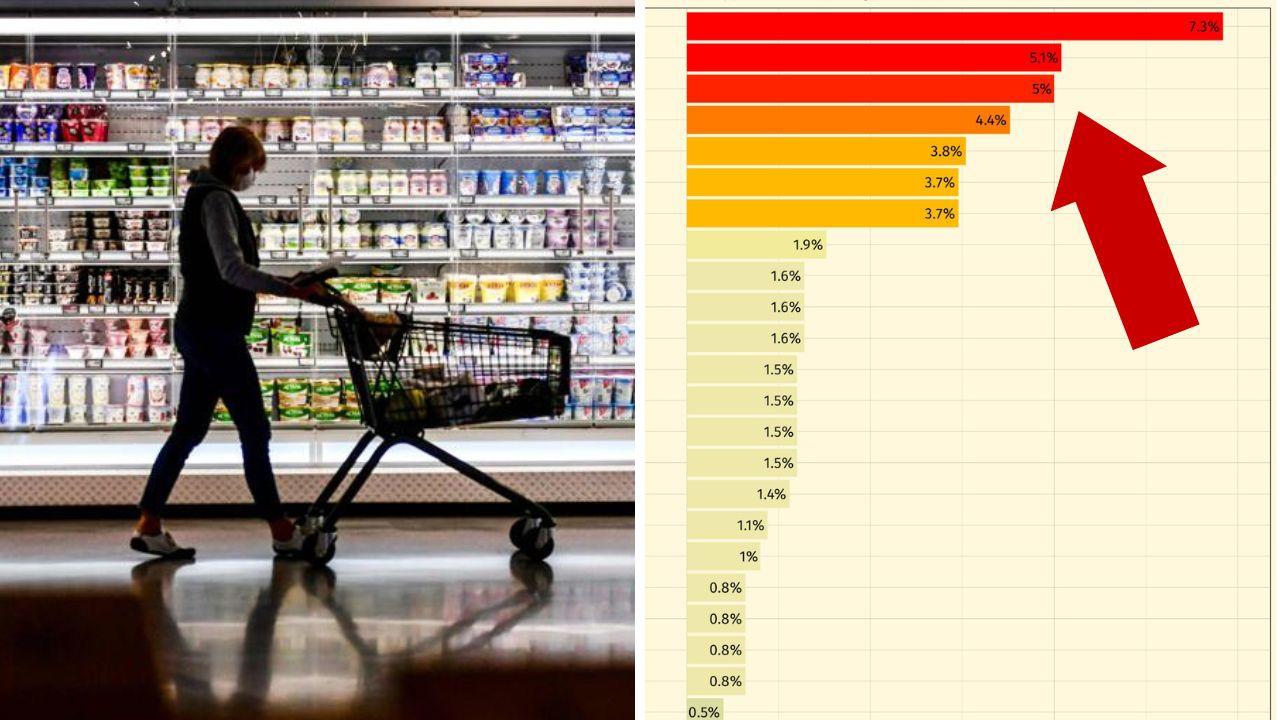recession? Who cares! Aussies are spending wildly on dining out as the ship goes down.
Australia is officially sick of cooking dinner, and we’re done with Uber Eats: we eat in now. At current restaurants.
The latest retail trade data shows Australians have had it up to here with food that comes in plastic boxes and cardboard tubs. We want to go out. We want ambience. We want proper printed menus, commercial crockery, and the kind of wine glasses you’d never have at home because they are as big as your head.
As the next chart shows, it’s not that we’ve stopped buying takeaway food altogether – it’s just that we’ve gone mad for restaurant spending.
Forget pre-pandemic levels – Aussies spent $3 billion dollars on restaurants, cafes and catering in just the month of June. That’s unheard of. We don’t give a damn about Covid and we also don’t care about the possibility of an upcoming recession. We are living for the moment.
Special shout-out to Tasmania too, where spending has gone from under $30 million to almost $60 million. I feel sympathy for the stressed and overworked waiters of Hobart just looking at this chart.
There’s a lot of pent-up birthday dinners in the above charts. Wedding anniversaries too, as well as simple nights at the pub.
I know I’ve been taking the chance whenever I can order a coffee in a cup that doesn’t have a little plastic lid. I actually sit in a cafe and sip it. This chart shows I’m not alone.
Whether Australians are thronging to fine dining or greasy chip joints, we are doing it despite Covid. The most recent retail spending data is from the month of June, so it doesn’t fully capture the latest wave driven by variant BA.5, but Covid has been an ever-present threat throughout this period when restaurant spending was rising. We’re not post-pandemic yet, even if we would like to be.
But what is different from 2020 and 2021 seems to be attitudes: We couldn’t give a stuff. Restaurateurs must be loving it (while infectious disease physicians might have another view).
fear fatigue
Australians are overly concerned. Before we celebrate this too much, we should remember the many with chronic illnesses and immune susceptibility for whom fear fatigue is not an option. Covid is killing more of us than ever. What’s different is we’ve assimilated that information. It’s part of the background hum now, rather than a salient and terrifying factor that affects people’s choices.
New risks are more frightening than old risks. Which is why you might think economic factors could be impeding restaurant spending. There’s a lot of chatter about recession risk, and when you look at surveys of consumer confidence, people report feeling gloomy. ANZ calls it “recession-level” confidence.
Once upon a time consumer confidence was a good guide to spending. But not now, apparently! Real recession level confidence doesn’t make people go out for dinner. What does might be an unemployment rate of 3.5 per cent – by far the lowest in decades.
I know what you are thinking
You’re thinking: Hey, the rise in spending could be because of higher prices. What if it’s not more restaurant meals, just bigger restaurant bills because of inflation?
It’s a really good thing to look at, which is why I checked that data as soon as I saw the spending data I showed you above.
So what does the price data show? It shows the price of restaurant meals shot up in the June quarter, by 1.4 per cent. That is high in historical terms! But not nearly enough to explain how spending rose 10 per cent in the same period.
The numbers really do reflect more plates of scrambled eggs, more Quarter Pounders, more pho, more Diet Cokes and more froyo. It’s a sign Australia has changed: We’re fearless now.
Jason Murphy is an economist | @jasemurphy. He is the author of the book Incentivology.
.

